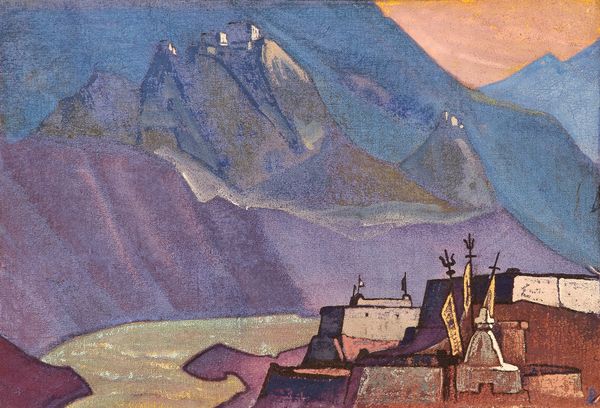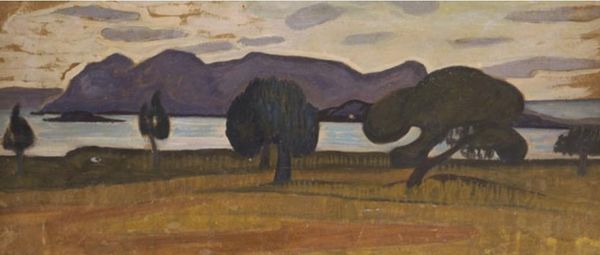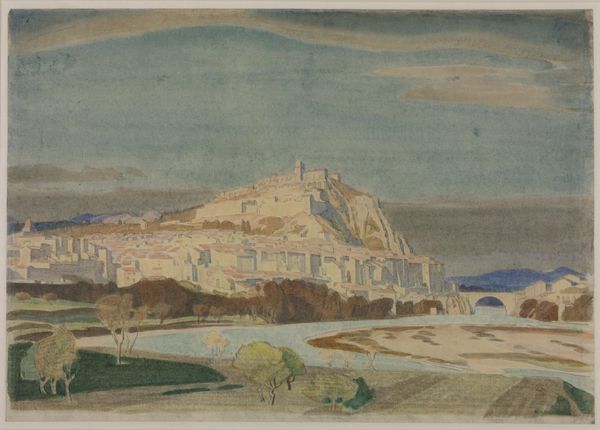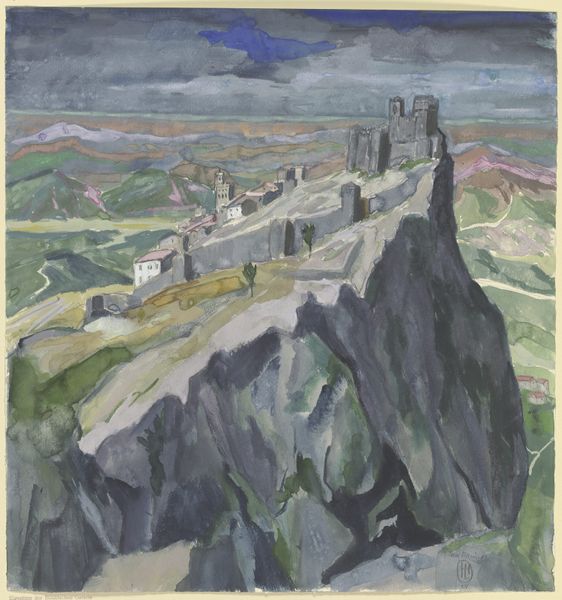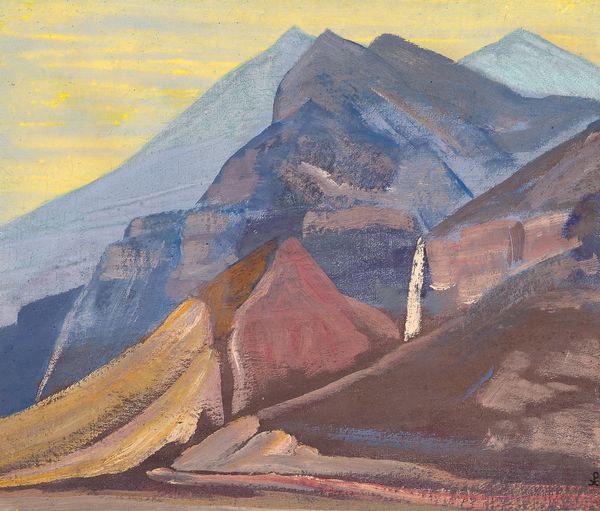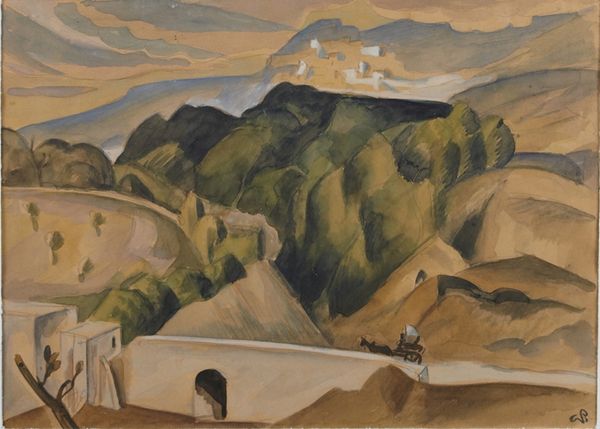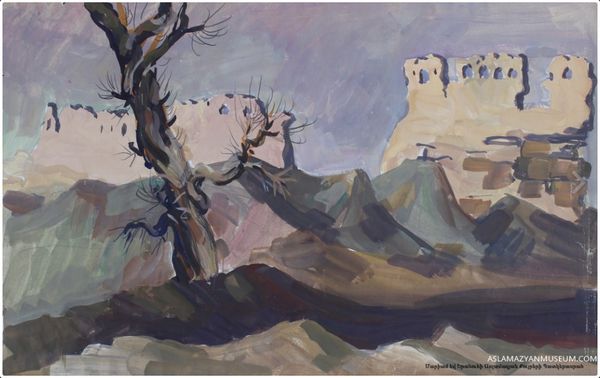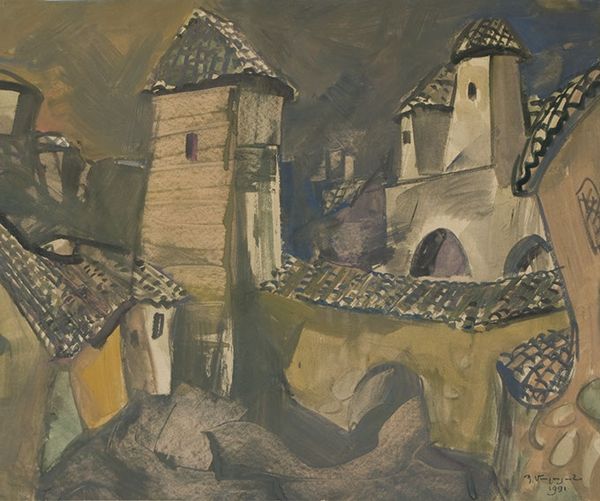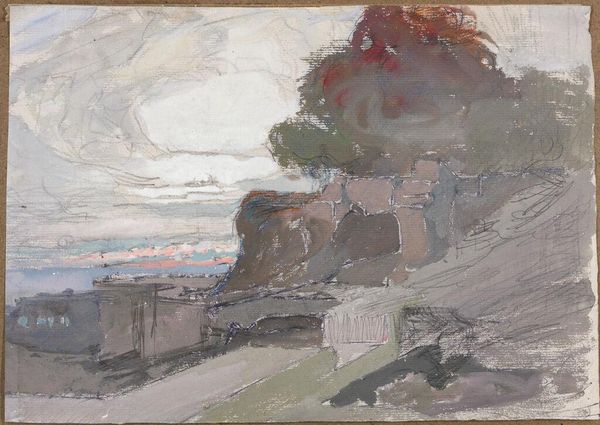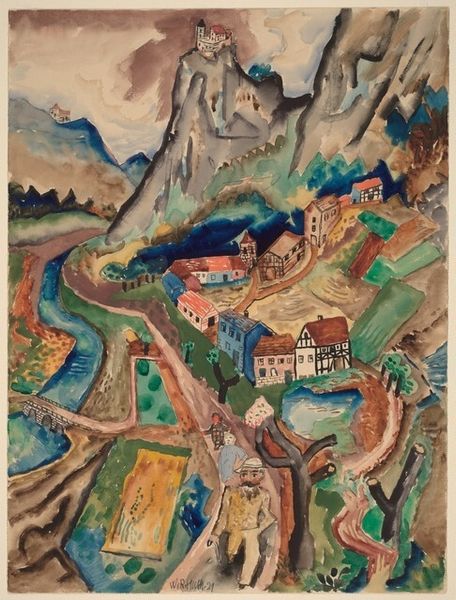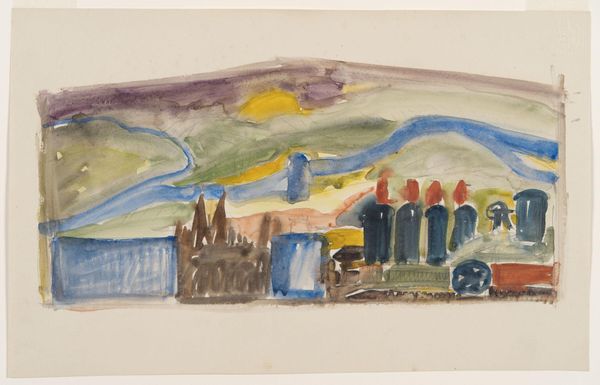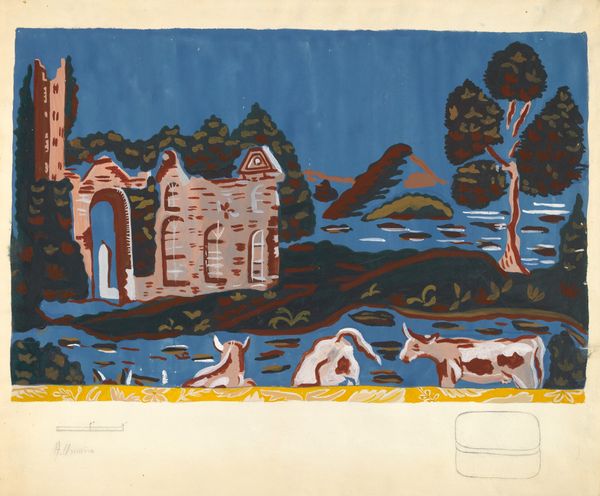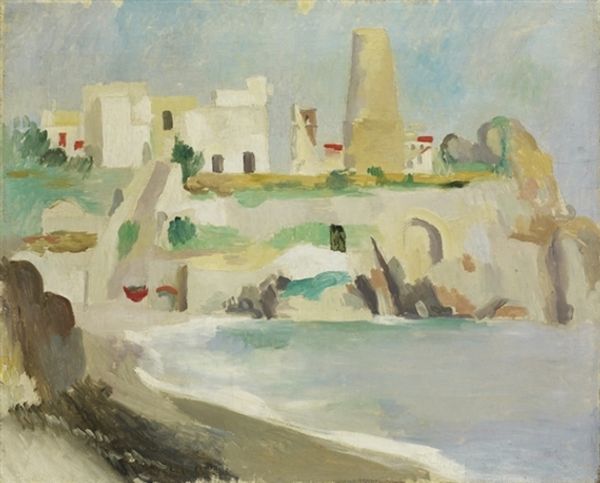
Dimensions: 17 x 24 cm
Copyright: Mariam Aslamazian,Fair Use
Curator: Soaked in late afternoon light, this is Mariam Aslamazian's "Kabul," painted in 1957. It's an oil painting, and the expressionistic landscape has such a distinct feeling of place. Editor: My initial feeling is a kind of peaceful stillness. The colour palette is muted, almost dreamlike, with those distant mountains rendered in such unexpected hues—mauves and teals, oranges… it's really quite evocative. Curator: It's interesting you say that. Given the socio-political context of that time, Afghanistan was at a pivotal moment in its history, navigating modernization, and Aslamazian, as a Soviet Armenian woman artist, perhaps brings a particular lens to capturing this urban space and its layered history of colonial intervention and cross-cultural exchange. Editor: It absolutely echoes through this picture, those shadows! They could be interpreted as indicators of Western influence, like a weight or presence on the urban landscape itself, contrasting sharply against the old city's architecture. Aslamazian must be acknowledging that duality in her rendering of space and time? Curator: The "naive art" style she uses only emphasizes this! It’s almost as if she’s bypassing a completely realistic representation of the city, which could further indicate some kind of complex relationship with the Soviet-era approach of showcasing different cultures. What feels like an authentic experience might well be a curated representation. Editor: Absolutely. And you can imagine that in that setting, and that time, she could easily feel like an outside observer, with particular artistic freedom and, arguably, an outsider's point of view, even while portraying, through art, her subject’s interiority, hopes, and even secrets! Curator: It certainly invites reflection, doesn't it? The canvas acts as a kind of mirror reflecting both the literal scene and the internal landscape. And, I think, we viewers today also superimpose our modern interpretations onto Aslamazian’s art and her subject matter. Editor: Exactly! Art enables precisely those kinds of conversations—and that ongoing dialogue is what matters most, isn't it? I will not look at Kabul the same way! Curator: Agreed. Me either. It has layers of depth and meanings I hadn't fully appreciated until now! Thank you for helping me see it with such depth and sensitivity.
Comments
No comments
Be the first to comment and join the conversation on the ultimate creative platform.
